Jackie Stewart, the classroom dunce who became a Formula 1 hero
A new documentary explores the life of the dyslexic Scotsman who became a legendary racing driver, driven by a mission to improve safety in the sport
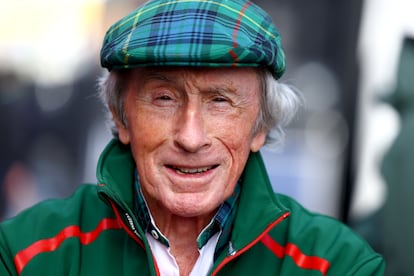

The rawest moments of Stewart, the powerful documentary about Scottish Formula 1 driver Jackie Stewart, are those that show the fatal accidents of colleagues and friends such as Roger Williamson, Pier Courage, Jim Clark, François Cevert, Jochen Rindt and Lorenzo Bandini. In 1970, Courage tragically died while driving a De Tomaso, a car that experts deemed unstable and excessively heavy. It happened on the Zandvoort circuit in the Netherlands, which claimed the lives of four drivers within a span of five years.
ESPN reporter Isabelle Lopez attributes this trail of premature deaths to the “inexplicable Roman circus mentality” that pervaded Formula 1 racing until well into the 1970s. During that era, drivers were often referred to as “gladiators.” The expectation was that risking their lives on unsafe tracks was the price to pay for their glamorous and privileged lifestyle.
That mentality explains the sport’s disastrous decade between 1960 and 1970, during which 18 drivers tragically died while racing. At the height of his career, Jackie Stewart boldly stood up to unscrupulous promoters, bloodthirsty fans and adrenaline-junkie drivers who took unnecessary risks.
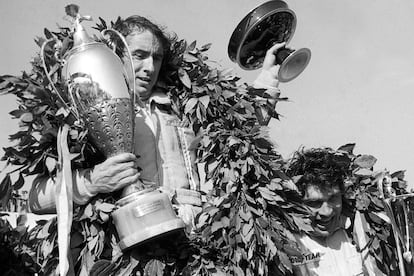
Formula 1 racing used to be a sport where common sense, discretion and pragmatism prevailed, despite its panoply of flamboyant playboys and bohemian aristocrats. For Stewart, Formula 1 was always an appealing and well-paid profession that didn’t need dramatic or macabre embellishments. World champions like Jack Brabham, Denny Hulme and Graham Hill had inadvertently promoted the notion that exceptional drivers transcended conventional morality. Therefore, it was acceptable for them to treat the press and fans with a certain arrogance, and to be unapologetic party animals, tax avoiders and roguish playboys. Their frequent brushes with death allowed them such liberties.
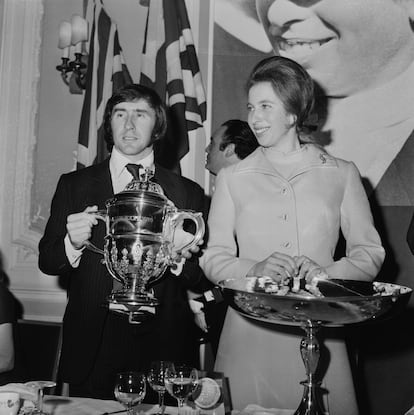
Stewart shattered that norm. In 1969, this plainspoken Scotsman claimed his first world title. Happily wed to his high school sweetheart, Stewart never accepted that Formula 1 racing meant competing in extreme conditions and attending the funerals of his teammates.
The classroom dunce
Stewart’s biographers, Timothy Collings and Peter Manso, both say the turning point in his life had come much earlier, when the future racing legend was just nine years old. Young Jackie was an unremarkable kid in the competitive environment of Dumbarton’s Hartfield Primary School, near Glasgow. Jackie, a friendly and active boy, was good at team sports and got along with everyone, even though he didn’t talk much.
But one day in September 1948, Stewart was directed by a teacher to read aloud in front of the class. The boy suffered a panic attack. While he knew how to read, it was always difficult for him. The letters suddenly dissolved into an indecipherable jumble and he stammered incoherently, fighting back tears.
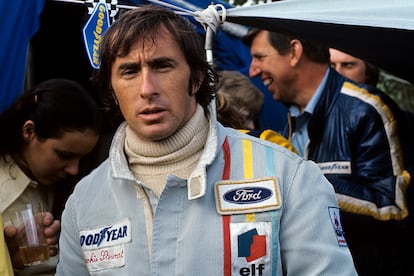
According to Collings, this incident may have been the first clear sign of dyslexia, although it was not diagnosed until much later in life. The teacher misinterpreted his difficulty as rebellion, and his classmates mocked him for being a dunce who couldn’t read at the age of nine. That unfair reputation stuck with him throughout his school years until his parents finally allowed him to leave school when he was 16. Jackie Stewart’s teachers had concluded that he was a well-behaved and polite boy, but a functional illiterate with limited intellectual abilities.

The hero's masks
Stewart has said that his lack of success in school paradoxically contributed to his achievements in life. It compelled him to set higher standards for himself and instilled an ambition and discipline that went against his natural inclinations. At the age of 12, he discovered his talent for clay pigeon shooting, a popular sport in Scotland and an Olympic event. He pursued it to prove to himself that he had worth, that he wasn’t destined for a life of humiliation and failure. After two years of intense training, he began winning amateur competitions to the delight and pride of his father, who owned a luxury car dealership.

Competitive sports became Jackie’s path to restoring his self-esteem. Despite his efforts, he narrowly missed achieving glory as an elite marksman. As one of the youngest members of the British team, he won numerous tournaments in Scotland, Wales, England and Ireland. Although he competed for a spot at the 1960 Olympic Games in Rome, he placed third behind his older and more experienced rivals. This setback took the 20-year-old Stewart to a new crossroads when Helen McGregor, his longtime girlfriend, suggested they get married. However, with Jackie’s meager salary as an apprentice mechanic in his father’s business, financial stability for the couple was uncertain.

Motivated again by the desire to excel, Stewart set out to become a professional race car driver. With a “very humble” Austin A30 that he bought for a mere £375 ($500) with money saved from tips, he honed his driving skills on deserted roads. Barry Filer, a family friend who collected race cars, was impressed by the young man’s ability and asked him to become a test driver for prototype cars that he entered in amateur races at the Oulton Park Circuit in Cheshire (England).
Stewart recognized the chance of a lifetime in that informal assignment. Behind the wheel of a Marcos, a sleek handmade British coupe, he entered races and emerged victorious in four. From that point on, he began to tear through various racing stages at breakneck speeds. Giles Richards writes in The Guardian that Stewart’s debut in Formula 3 driving a Tyrrell caused a sensation. Just a few days after his initial win in March 1964 at the Snetterton Circuit, the expanding Cooper team offered him a chance to move up to Formula 1. He chose to postpone it for a year and eventually signed a £4,000 ($5,000) contract with BRM in 1965, a few weeks after making his Formula 1 debut driving a Lotus as a last-minute substitute for the injured Jim Clark.
The path to the summit
Stewart won his first Grand Prix race at the Monza Circuit (Italy) in September 1965. Fans loved his steady and precise driving style, along with the mane of tousled hair that made him look like a fifth Beatle on wheels. Everyone expected him to compete for the world championship against the experienced former champion, Jim Clark, and another promising young teammate, Graham Hill. However, everything came to an abrupt halt when he had a serious accident months later at Spa-Francorchamps during the Belgian Grand Prix. The young driver had a close brush with death, spending a seemingly endless minute trapped upside down in his vehicle, soaked in gasoline, before Graham Hill and Bob Bondurant came to his rescue.
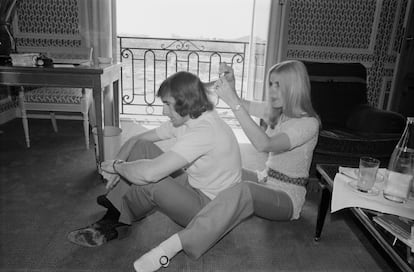
Stewart’s traumatic accident compelled him to undertake a determined and somewhat solitary effort to enhance Grand Prix safety. He wanted four fundamental changes: exit areas, reinforced barriers, professional evacuation teams at the track, and the removal of extraneous obstacles like the telegraph poles that remained on certain tracks. Stewart emerged as the de facto rebel of the racing world, bravely confronting the sport’s governing bodies.
This foray into elite unionism, which included a call to boycott the neglected tracks at Spa-Francorchamps and Nürburgring circuits, had consequences. Despite initial support from his boss, Louis Stanley, he eventually lost the trust of BRM, who thought he was more focused on making demands than on winning a title. He explored opportunities with teams such as Matra and March, and tried other racing formats like the Indianapolis 500 and 24 hours of Le Mans. In December 1967, he told his wife that he was thinking about retiring from racing and investing in the family business in Dumbarton. Stewart seemed willing to give up his dreams and settle for the quiet life. But he didn’t do it. The stubborn determination gained from years of schoolyard bullying drove him to persevere once again.
In 1969, he finally achieved the great success he had been pursuing since his youth. Matra entrusted him with an incredibly competitive car, the legendary MS-10 Cosworth, and Stewart made the most of it. His victories at the Montjuïc, Clermont-Ferrand and Silverstone circuits transformed him from a rebellious underdog to a team leader. Despite formidable competitors like Rindt, Hulme, McLaren, and especially the young Belgian, Jacky Ickx, Stewart clinched the world championship with six wins in eleven races and a total of 63 points, outscoring Ickx by 26. With his title assured, Stewart decided not to participate in Grand Prix races in the United States and Canada.
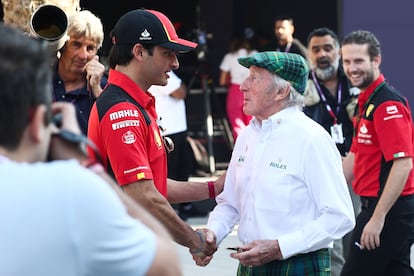
Stewart’s victory better positioned him to advocate for improved safety in Formula 1 racing, and people finally started to listen. Kristin V. Shaw, editor of The Drive magazine, says that Stewart was a trailblazer for safety, a cause that would later be championed even more forcefully and successfully by driver Niki Lauda. Stewart went on to win two more titles in 1971 and 1973 before retiring from racing at the relatively young age of 34.
Giles Richards believes that the main catalyst for Stewart’s retirement was “the death of his friend and teammate, François Cevert,” which deeply affected Stewart. The Frenchman died while practicing at the Watkins Glen track (New York) for the final race of the 1973 season. Cevert was an accomplished racer who won his first Grand Prix event when he was only 25. In Will Buxton’s book My Greatest Defeat: Stories of hardship and hope from motor racing’s finest heroes, Stewart said Cevert’s death made him realize that he had been narrowly escaping disaster for many years, and that each race brought him an inch closer to premature death.
After retiring from racing, Stewart worked as a sports commentator for ABC and NBC, as well as for Australian, Canadian and British television networks. In 1997, he became the owner of the Stewart Grand Prix professional team, known for its roster of top-tier drivers, including Johnny Herbert and Rubens Barrichello. Good friend George Harrison dedicated a song called Faster to Stewart in 1977.
Despite all his success, Stewart revealed in his autobiography that one of the moments he truly felt happy in life was when he turned 40 and found out he had dyslexia. “My schooling was a total disaster. The torment, the humiliation, the frustration... So when I found out I was dyslexic, it was like someone had saved me from drowning.”
Sign up for our weekly newsletter to get more English-language news coverage from EL PAÍS USA Edition
Tu suscripción se está usando en otro dispositivo
¿Quieres añadir otro usuario a tu suscripción?
Si continúas leyendo en este dispositivo, no se podrá leer en el otro.
FlechaTu suscripción se está usando en otro dispositivo y solo puedes acceder a EL PAÍS desde un dispositivo a la vez.
Si quieres compartir tu cuenta, cambia tu suscripción a la modalidad Premium, así podrás añadir otro usuario. Cada uno accederá con su propia cuenta de email, lo que os permitirá personalizar vuestra experiencia en EL PAÍS.
¿Tienes una suscripción de empresa? Accede aquí para contratar más cuentas.
En el caso de no saber quién está usando tu cuenta, te recomendamos cambiar tu contraseña aquí.
Si decides continuar compartiendo tu cuenta, este mensaje se mostrará en tu dispositivo y en el de la otra persona que está usando tu cuenta de forma indefinida, afectando a tu experiencia de lectura. Puedes consultar aquí los términos y condiciones de la suscripción digital.
More information
Últimas noticias
Most viewed
- Reinhard Genzel, Nobel laureate in physics: ‘One-minute videos will never give you the truth’
- Oona Chaplin: ‘I told James Cameron that I was living in a treehouse and starting a permaculture project with a friend’
- Pablo Escobar’s hippos: A serious environmental problem, 40 years on
- Why we lost the habit of sleeping in two segments and how that changed our sense of time
- Chevy Chase, the beloved comedian who was a monster off camera: ‘Not everyone hated him, just the people who’ve worked with him’










































